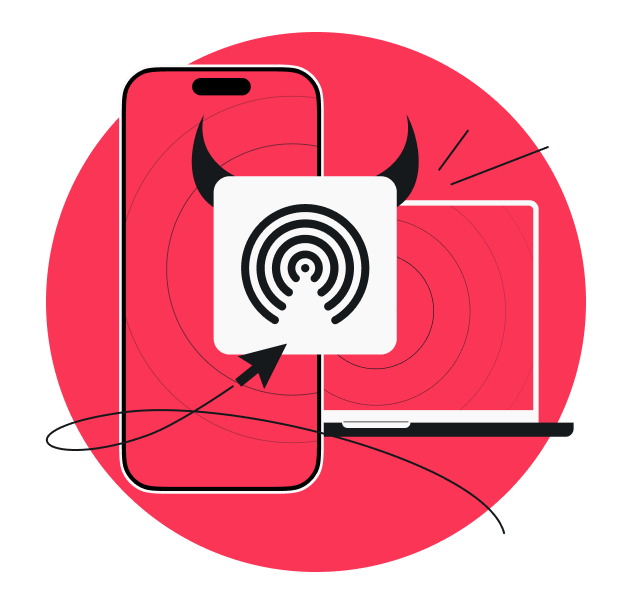Choosing the best data removal service can be difficult. Optery is one of the most popular options on the market, but how well does it protect your online privacy?
Check out this comprehensive review to explore Optery’s strengths, weaknesses, and key features to help you decide if it meets your needs.
Note: Data accurate as of December 1, 2025.
Optery at a glance — pros and cons
Here’s a quick overview of Optery’s top advantages and disadvantages.
|
Pros
|
Cons
|
|
Both free and paid plans available
|
Limited functionality on free plan
|
|
Automated data scans and removal (on paid plans)
|
Potentially time-consuming data removal
|
|
User-friendly dashboard
|
Active subscription required for ongoing monitoring
|
|
Before and after screenshots included in reports
|
Relatively expensive top plan
|
|
Positive reputation among users
|
Most expensive plan needed for full protection
|
|
Extensive coverage of people search sites
|
Only available in the US
|
|
Personalized opt-out process for manual data removal
|
Less coverage for data brokers that aren’t standard search sites
|
Optery boasts a clear user interface, free and paid plans, and comprehensive data removal reports.
However, Optery’s free tier has limited functionality — its service is only available in the US, and removing your data can take up to a few months.
Overall, Optery has garnered a good reputation among users for its effectiveness and support. Whether you opt for the free or paid plan, the service aims to deliver a seamless experience in managing your presence on the web.
What is Optery?
Optery is a specialized data removal service that helps users wipe their personal information from data broker sites.
With Optery, people can significantly reduce their online footprint, lowering their risk of fraud and identity theft. The service scans the web for exposed data and submits opt-out requests to remove those details.
Optery offers several plans users can choose from. The free plan provides instructions for self-service opt-outs, while various paid plans remove data automatically. Higher tiers also boast broader data broker coverage, going up to 380+ data brokers covered on the Ultimate plan.
Key features of Optery
Here are the basic features that make Optery appealing to so many users.
Manual guidance
Optery’s Free Basic plan highlights which brokers have your data and gives instructions on manually sending them opt-out requests. Even if you think a paid subscription suits you best, all users can transparently see where their data appears across different broker sites before committing to a plan.
These free tools are useful for budget-conscious users and those who prefer a DIY approach to data removal.
Automated opt-outs
Users with a paid plan receive a largely automated data removal experience with Optery.
Optery scans people search sites for your private information. If anything comes up, the service sends opt-out requests to specific data brokers and notifies you once your data is removed.
This automated approach is convenient for users who want a streamlined way to preserve their online privacy.
Custom removals
Optery’s premium plan — the Ultimate plan — lets users customize removal requests for additional data broker profiles that aren’t already covered.
The custom requests can be a great service for anyone dealing with unusual violations of their data privacy rights, but they might not be successful. It’s also worth noting that they can’t be accessed until 30 days after subscribing, which may inconvenience some users.
Comprehensive scanning
All Optery plans, both free and paid, let users see where their personal data appears online.
Transparently getting this info empowers you to make better-informed decisions if only a few data brokers have your data. However, if you see your personal details have been exposed by several people search sites, you’ll know a paid plan is likely your best bet.
After removal, Optery continues to conduct monthly automated scans to ensure your data stays off the web.
Removal from search results
Optery can help you remove outdated personal information from Google search results. It uses Google’s free tool to achieve this, but letting Optery handle the process can be a major time-saver for users who aren’t tech-savvy.
To take advantage of Optery’s outdated content removal tool, however, you’ll need to subscribe to the top-tier Ultimate plan.
Optery pricing and plans
Along with a free tier for self-service data removal, Optery has three paid plans users can choose from. All are offered through monthly or yearly subscriptions, and you can take advantage of a 30-day money-back guarantee.
|
Plan
|
Price (monthly plan)
|
Price (yearly plan)
|
|
Core
|
$3.99/mo
|
$3.25/mo
|
|
Extended
|
$14.99/mo
|
$12.42/mo
|
|
Ultimate
|
$24.99/mo
|
$20.70/mo
|
Note: All prices in USD.
Most other leading data removal services offer the same coverage across all their plans, but this isn’t the case with Optery. A more expensive Optery subscription unlocks more data brokers, so you’ll need to choose the Ultimate plan to access Optery’s full coverage.
Apart from this, here are the other main features of Optery’s paid plans.
|
Core
|
Extended
|
Ultimate
|
|
Monthly automated scans
|
Unlimited name variations for one person
|
Unlimited custom removal requests after 30 days
|
|
Full automation
|
Automation mixed with a human privacy specialist
|
Outdated content removal
|
|
Exposure risk reporting
|
Removal reports with before and after screenshots
|
Priority email support
|
Optery’s data removal process
The data removal process with Optery includes a few simple steps.
- Initial scans: Optery checks data broker sites to see if your personal information comes up online.
- Opt-out requests: if Optery finds your details on a people finder site, it submits a request to remove this information on your behalf.
- Follow-up scans: Optery conducts future scans to confirm whether or not your data has been removed. Once your information is removed, you’ll receive an in-depth report verifying the changes.
- Continuous monitoring: Optery will keep scanning the affected data broker sites moving forward to make sure your details don’t return.
Remember that the above steps are only for users with a paid plan. Anyone using Optery’s free tools can still get scan results, but they’ll need to manually contact data brokers to remove their private information.
Optery’s data broker coverage
Online data removal from Optery usually includes people search sites, marketing brokers, and B2B lead generation brokers. The sites left out of its scans tend to be risk mitigation, recruitment, and financial information brokers.
Optery’s services are limited to US residents and US-based data brokers.
According to the Optery website, here is how many data broker sites are covered under Optery’s different plans.
|
|
Standard coverage
|
Coverage with Expanded Reach enabled
|
|
Core
|
110+ sites
|
365+ sites
|
|
Extended
|
275+ sites
|
530+ sites
|
|
Ultimate
|
385+ sites
|
640+ sites
|
A free account with Optery gets you scans of an undisclosed number of sites, but no removals are included. For full protection across 640+ data broker sites on its Ultimate plan, Optery claims you need to activate a feature called Expanded Reach.
The thing is, this number isn’t exactly accurate.
According to Optery, Expanded Reach includes data brokers that “do not yet meet Optery’s rigorous removal verification standards.” Some have stopped complying with removals, have gone out of business, or are only relevant to residents of a specific state or region.
In sum, while Optery’s coverage is extensive, you have to take its reported figures with a grain of salt.
“Optery highlights the number of people search sites it covers and uses it as a main selling point, but what also matters is the quality of those sites.
A closer look shows that many of these sites are small data brokers that operate only within specific states or focus on niche information, like criminal or property records.”
– Povilas Reinotas, Data Removal Platform Lead at Incogni
Optery data privacy compliance and policies
Optery’s privacy policy is completely transparent about how it handles your sensitive information. It’s a trustworthy service that doesn’t sell or misuse user data.
In the US, Optery adheres to the California Consumer Privacy Act (CCPA), and the service follows the EU’s General Data Protection Regulation (GDPR). Both of these regulations give individual users the legal right to request data removal, access private information, and limit how other bodies share it.
When it comes to other regulations, Optery doesn’t adhere to Canada’s Personal Information Protection and Electronic Documents Act (PIPEDA), and its compliance with measures like the CPA, UCPA, VCDPA, and CTDPA isn’t specified.
Optery reporting and monitoring
Optery gives users detailed opt-out progress and exposure reports, so you won’t have to guess about the status of your removal requests. These in-depth overviews share where user data has been found across hundreds of data broker sites, offering Optery customers full transparency throughout the entire deletion process.
Note that this ongoing monitoring is only available on a paid plan, and different plans offer different levels of insight. For instance, the Core plan provides basic exposure risk reporting, but the Extended plan is needed to access removal reports with screenshots every 90 days or so.
While it’s not ideal for this kind of monitoring to be reserved for top-tier plans, periodic scans are vital for any removal tool. Some of your data may reappear, so it’s good for a tool to offer long-term peace of mind instead of a quick fix.
Optery vs. Incogni
For more context, it’s helpful to take a closer look at Optery vs. Incogni, another leading data removal service. Although the two may appear similar on the surface, they differ significantly in several areas.
Automation
Optery’s higher-tier plans let users enjoy more automation. The Free Basic plan guides you in how to send out manual opt-out requests, while paid plans will automate much of this process.
In contrast, Incogni allows more automation for customers on all of its plans. In most cases, Incogni starts sending out data removal requests on your behalf after you sign up — all you have to do is track its progress.
Like Optery, Incogni offers custom removal requests, which involve users working with a dedicated privacy specialist. These are best suited for data brokers not covered by the automated service.
So far, Incogni’s custom removals have deleted user data from many more sites than Operty’s have. Incogni has successfully removed info from over 2,000 unique domains, while Optery has done this from just over 700 sites.
Coverage
Optery’s coverage depends on your chosen plan. Users can get removals from 110+, 275+, or 385+ data brokers on a paid plan. The free plan, however, doesn’t automatically delete your info from any sites.
Incogni monitors over 420 data brokers, including 260+ people search sites, for all of its plans. Based on numbers alone, it’s hard to say whether Incogni or Optery provides better coverage. It’s worth noting, though, that Incogni continuously prunes its broker list to ensure its total is never misrepresented.
Moreover, Incogni can cover more kinds of sites from the start. It can automatically remove data from risk mitigation, recruitment, and financial information brokers, none of which are covered by Optery by default. Activating Optery’s Expanded Reach feature does unlock private-database brokers, however.
Geographic reach scores Incogni another point. While Optery is only available in the US, Incogni serves users in 34 countries, including the US, the UK, Canada, EU member states, Norway, Switzerland, Iceland, and Liechtenstein.
Ease of use
According to customer reviews on Trustpilot, Optery’s dashboard is clear and user-friendly. Users can customize many settings without giving up transparency into how their information is deleted.
Incogni is also a great choice for users looking for an intuitive tool. Its dashboard is more streamlined, making it easy for users to get comprehensive data removal in just a few clicks.
Extras
Apart from its standard service, Optery lets users enjoy a handful of added features, namely:
- Manual opt-out instructions: free users and those dealing with brokers that aren’t automatically covered get guidance to remove their private data themselves;
- CSV exports: users can download removal reports in the CSV format for easy reviewing, storing, and sharing;
- Family member protection: you can add other household members to your plan to extend personal data removal to partners and children.
That said, Incogni is included in the Surfshark One+ cybersecurity bundle, so users also get access to:
- VPN (Virtual Private Network): a VPN encrypts online traffic and masks your IP (Internet Protocol) address to increase internet privacy and security;
- Antivirus: software that protects your devices from malware and infected files;
- Alternative ID: a tool that generates a new email address to help you keep unwanted messages out of your primary inbox;
- Alert: a solution that pings you when your private data gets leaked online;
- Search: a private search engine that shows you purely organic results without ads or trackers.
Price
Remember, Optery offers a free plan along with three paid plans for monthly and yearly subscriptions. The Core plan starts at $3.25/mo with a yearly subscription, while the Unlimited plan costs as much as $24.99/mo if you choose to get it for a single month.
Meanwhile, you can get Incogni as a part of the Surfshark One+ bundle at the following prices:
|
One-month plan
|
12-month plan
|
24-month plan
|
|
$14.99/mo
|
$6.09/mo
|
$3.99/mo
|
Note: All prices in USD.
Incogni’s 24-month subscription offers the best value at $4.19/mo. While Optery’s Core plan starts at only $3.25/mo, note that you’ll have access to limited features. At this price point, Optery users miss out on custom removals, privacy specialists, and scans of hundreds of data brokers.
At $4.19/mo, Incogni users still get comprehensive coverage. Backed by a 30-day money-back guarantee, the 24-month plan lets you access the full Surfshark One+ suite, including Surfshark VPN, Antivirus, Alternative ID, Alert, and Search.
Bonus: Check out our Incogni review for a full breakdown of its features, pricing, and benefits.
The added value of Surfshark and Incogni
Incogni is a highly effective data removal tool, earning Editors’ Choice awards from both PCWorld and PCMag. Nevertheless, its true potential is unlocked when it’s used together with the rest of the Surfshark One+ bundle.
By coupling Incogni with other cybersecurity tools like a VPN and antivirus software, users can create a safer online ecosystem for themselves, their data, and their devices. Surfshark provides a comprehensive approach to online privacy, making it an attractive option for anyone seeking all-around internet protection.
Key takeaway: Is Optery worth it?
Optery is a reputable data removal service, but you’d need to pay for its expensive Ultimate plan to tap into everything it can do. The price, along with Optery’s focus on the US market, may make the tool inaccessible to many users.
If you’re looking for streamlined removal, international coverage, and more straightforward pricing, Incogni might be a better choice. Incogni and the rest of the Surfshark One+ package are powerful solutions that enhance your online privacy.
FAQ
Does Optery really work?
Yes, Optery is effective at requesting the removal of your personal information from data broker websites. For users on a paid subscription, it scans hundreds of sites and sends opt-out requests on their behalf, helping reduce their digital footprint and protect online privacy.
How long does it take for Optery to work?
Optery typically begins submitting opt-out requests within days of activation, and initial results can be seen within one or two weeks.
However, complete removal from all supported sites may take up a few months, but this partially depends on how responsive each data broker is.
How much is Optery per month?
Optery’s monthly price depends on the chosen plan and the subscription length.
The lowest monthly price is $3.25 for the Core plan on an annual subscription. The most expensive option is a one-month subscription to the Ultimate plan, which costs $24.99.
What is Optery’s Trustpilot rating?
Optery has a Trustpilot rating of 4.4 out of 5. Overall, it’s a popular data removal service with mostly satisfied users.





